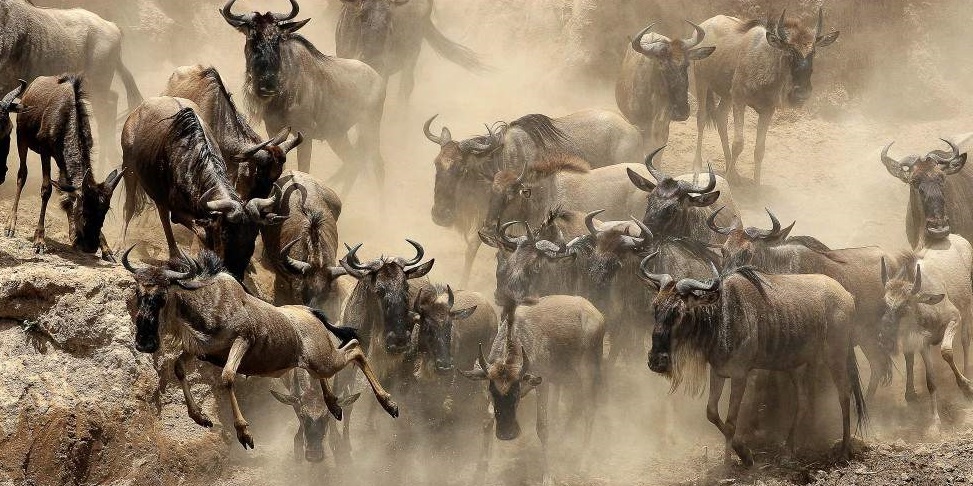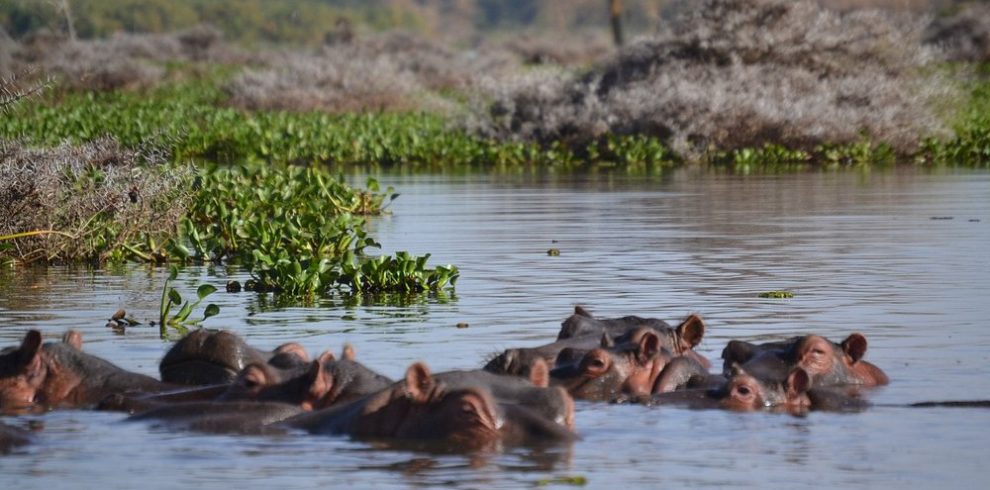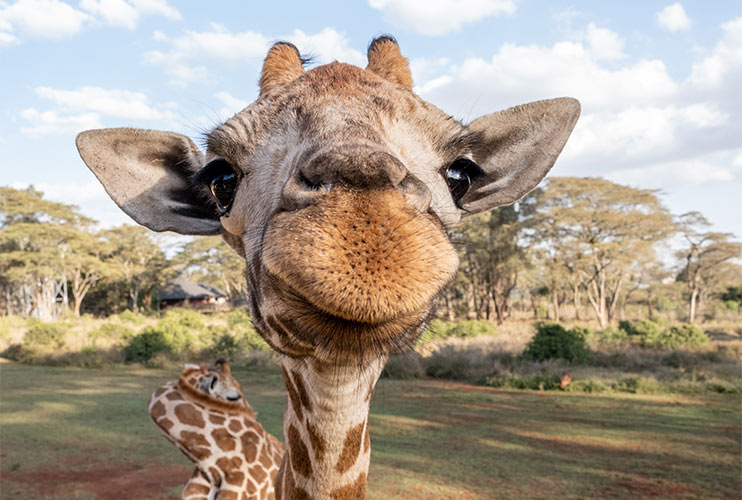
The giraffe, known for its towering height, long neck, and unique beauty, is one of Africa’s most iconic and intriguing animals. Standing tall and looking over the African savanna, the giraffe is an elegant and peaceful herbivore that has captivated the imagination of wildlife enthusiasts and travelers for centuries. As the tallest land mammal, the giraffe’s distinctive features and behavior make it a subject of fascination for many.
In this article, we explore 5 fascinating facts about the giraffe that reveal just how unique and remarkable these gentle giants truly are. From their incredible physical adaptations to their surprising social behaviors, giraffes have earned their place as one of the most beloved creatures in the animal kingdom.
1. The Giraffe is the Tallest Land Mammal
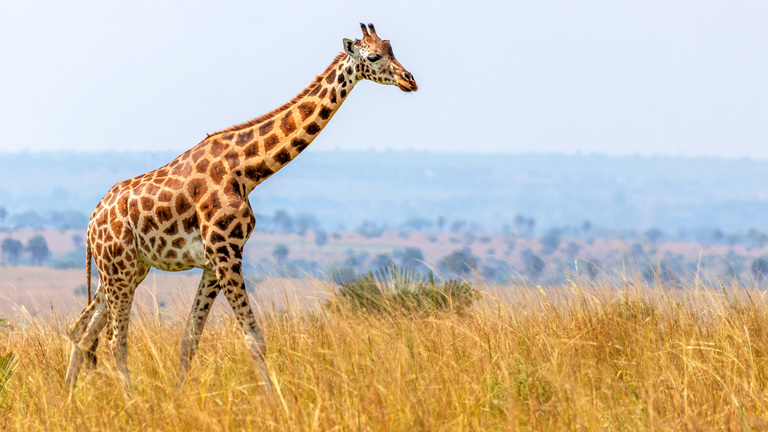
One of the most obvious and fascinating facts about the giraffe is its extraordinary height. Giraffes are the tallest land mammals, with adult males (bulls) typically reaching up to 18 feet (5.5 meters) in height, while females are slightly shorter at around 14 to 16 feet (4.3 to 4.9 meters). Their height is an excellent adaptation that has enabled them to live in the wide-ranging African savanna where food resources on the ground are scarce.
The giraffe’s height provides several advantages in the wild. Most importantly, it enables them to access tree top branches such as those of acacia trees that they prefer to feed on the leaves which other herbivores are unable to access. With their long necks and legs, giraffes can forage for food in areas that other animals cannot, giving them a significant edge when it comes to securing nourishment.
Their height is also a form of defence mechanism Giraffes’ tall stature enables them to spot potential threats from far away, whether it’s a predator like a lion or a human approaching. This provides them with the time to escape or respond to a threat. In addition, the giraffe’s towering height makes it difficult for predators to reach them, as their long legs and strong kicks provide a formidable defense.
Despite their size, giraffes are incredibly graceful and can run at speeds of up to 35 miles per hour (56 km/h) for short distances, making them surprisingly agile despite their long, lanky frame.
2. Giraffes Have a Unique and Complex Neck Structure
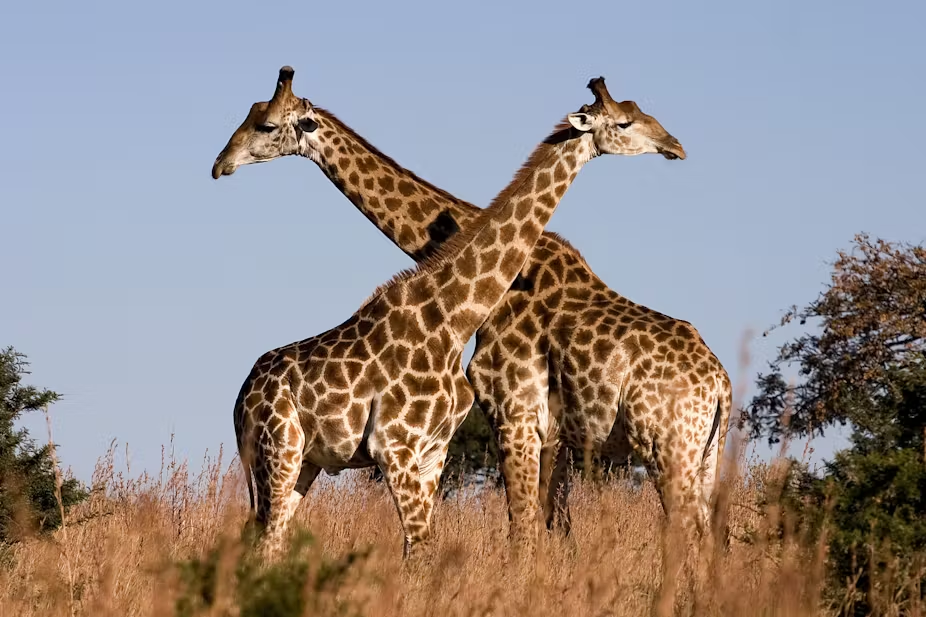
Another fascinating aspect of the giraffe is its neck, which, although extremely long, contains only seven vertebrae — the same number as most mammals, including humans. What makes the giraffe’s neck unique is that each of the seven vertebrae is enormous compared to those of other mammals, with each one being around 10 to 12 inches (25 to 30 centimeters) in length. The length of the neck is the result of the giraffe’s evolutionary adaptation to reach high branches and leaves.
While giraffes have long necks, their neck muscles are remarkably strong, allowing them to support the weight of their heads, which can weigh up to 20 pounds (9 kg). The muscles in the giraffe’s neck help control its movements with remarkable precision. This enables them to feed in tall trees and to easily get to their feeding heights.
Giraffes have specialized blood vessels and valves in their necks to manage the blood flow between their heart and brain. This is important because when giraffes bend down to drink water, the blood has to travel a long distance to the brain, and the valves prevent blood from rushing to the head too quickly, which could cause a dangerous spike in pressure. Interestingly, giraffes use their necks for more than just feeding. Male giraffes engage in a behavior called “necking” when they fight for dominance and mating rights. It is in these combats that the long necks of the males are swung like clubs as the male would seek to strike his fellow with considerable force using his heavy head. Such fights may also take some minutes, with the male, who delivers the most severe blows winning the right to copulate with neighboring females.
3. Giraffes Have Unique Patterns on Their Coats

Another fascinating and distinctive feature of giraffes is their coat pattern, which consists of irregular patches that vary in size and shape. The color of the patches also differs between individual giraffes, with some having light brown patches, while others have darker, richer hues. No two giraffes have the same pattern, much like human fingerprints.
The pattern not only makes giraffes visually striking but also serves a functional purpose. These patterns help giraffes to blend into their environment, providing camouflage amidst the savanna’s trees and shrubs. The irregular shapes and colors of the patches help the giraffe to remain concealed from predators, especially when the sun casts shadows across the landscape.
The patches on a giraffe’s coat are also separated by lighter-colored fur, which adds to the animal’s ability to blend in with its surroundings. The giraffe’s fur pattern can vary depending on its habitat, with giraffes living in wooded areas often having darker, more defined patches, while giraffes in open savanna may have lighter, more diffused markings. These subtle differences contribute to the giraffe’s survival by helping it remain hidden from predators.
Interestingly, giraffes also use their coat markings as a way to identify each other. Each giraffe can recognize and remember the patterns of other individuals within the same herd, and these markings play a role in giraffe social structure and communication.
4. Giraffes Are Gentle and Social Animals
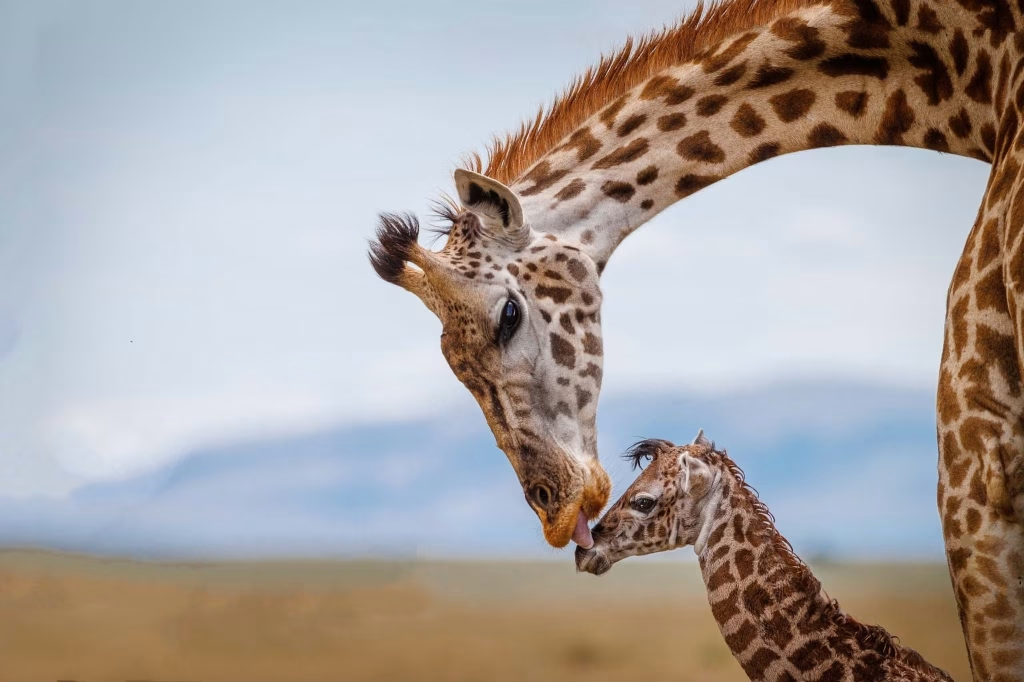
Despite their size and strength, giraffes are generally gentle and peaceful creatures. They are vegetarians, and they mainly feed on fruits, leaves, and flowers of trees. They are not food hunters and spend many hours a day grazing.
Giraffes are social animals, although their social structures are more fluid than those of other herd animals. They create loosely formed herds, which are usually composed of females with their offspring, but males live either alone or in groups of young males. Unlike other herd animals, giraffes do not have a strong, fixed hierarchy within their social structures, and their relationships are more fluid and based on individual interactions.
Females and young giraffes are particularly social and will often stay in groups for protection and support. Males however are less social, particularly the older ones. Nevertheless, they will continue to socialize with other males during the breeding period and a few times there are instances of bachelor herds which come out as a means to commune and to have necking contests to determine strength and position of dominance.
Despite the generally peaceful nature of giraffes, they are still vulnerable to predation, especially when they are young. Lions, hyenas, and crocodiles pose a significant threat to young giraffes, but adult giraffes can use their powerful legs to defend themselves against attackers. A single kick from an adult giraffe can be lethal to a predator.
5. Giraffes Have a Long Gestation Period and Strong Maternal Bonds
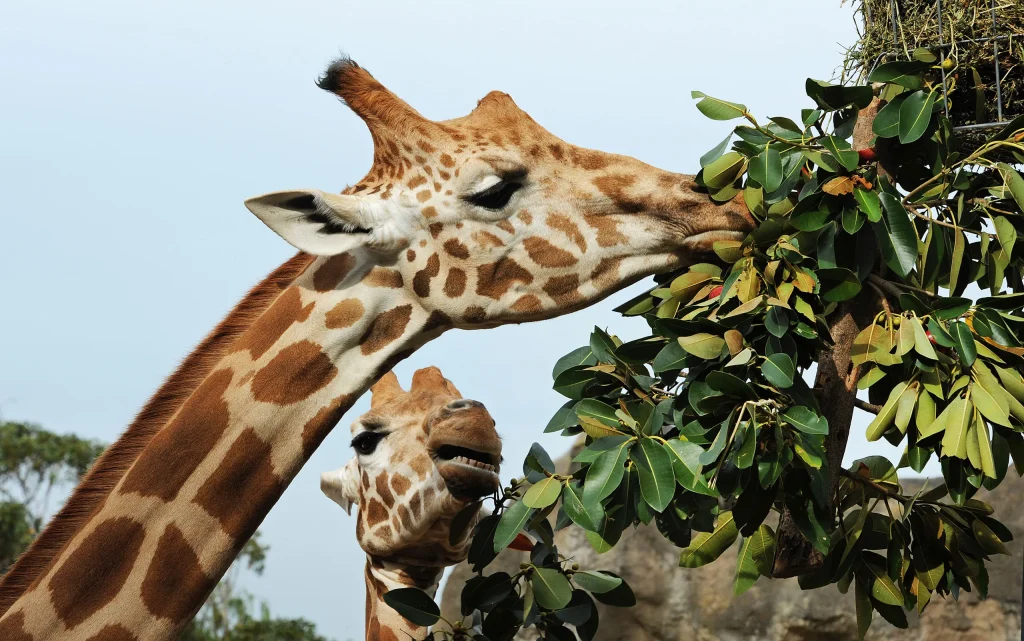
The final fascinating fact about giraffes is their long gestation period, which lasts about 15 months — one of the longest of any land mammal. After this extended period of development, female giraffes give birth to a single calf that can weigh as much as 100 to 150 pounds (45 to 68 kg) at birth. The calves are born standing and within 30 minutes after the birth they stand and can walk, an aspect that is very important and that helps them to stay in touch with the herd and not be prey to predators.
Giraffe mothers are highly protective of their young. A mother and a calf are attached to one another and a mother calf will watch over her calf very closely and keep it as close to her body as possible to avoid predators. The calf will spend months with its mother before joining other calves in the wild, and in these months, the animal gets the most important skills on survival such as methods of feeding and orientation to the surroundings.
As the calf grows up, it becomes more independent in its movements but still it depends on its mother to protect and advise her. The baby calf stays in the protection of the group till the time it is old enough to explore elsewhere.
Giraffes typically give birth to a new calf every two years, allowing them to maintain their population. However, due to their long gestation period and the time spent caring for their calves, giraffes have a relatively slow reproduction rate.
Conclusion
The giraffe is truly one of Africa’s most fascinating and unique animals, with a range of remarkable physical and behavioral traits that set it apart from other species. From their towering height and powerful necks to their striking coat patterns and gentle nature, giraffes are a testament to the wonders of the animal kingdom.
By understanding these 5 fascinating facts about the giraffe, we gain a deeper appreciation for the intricate adaptations that allow giraffes to thrive in the wild. These facts showcase the giraffe’s incredible strength, elegance, and survival strategies, making it a symbol of beauty and resilience in the African landscape. As we continue to witness and protect giraffes in their natural habitats, it’s important to remember their value not only as an iconic species but also as a critical part of the ecosystem.

